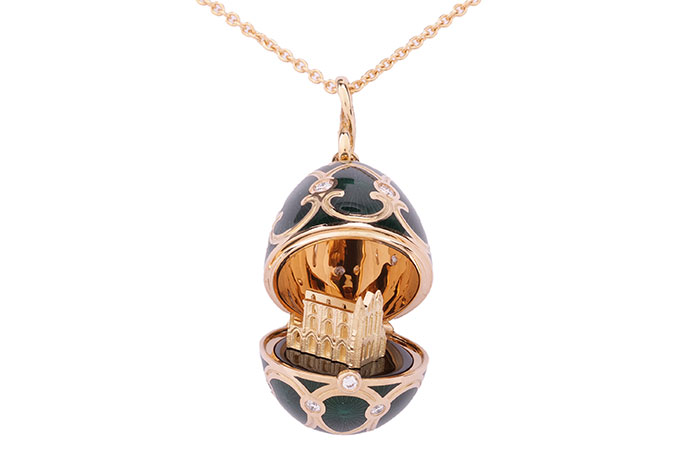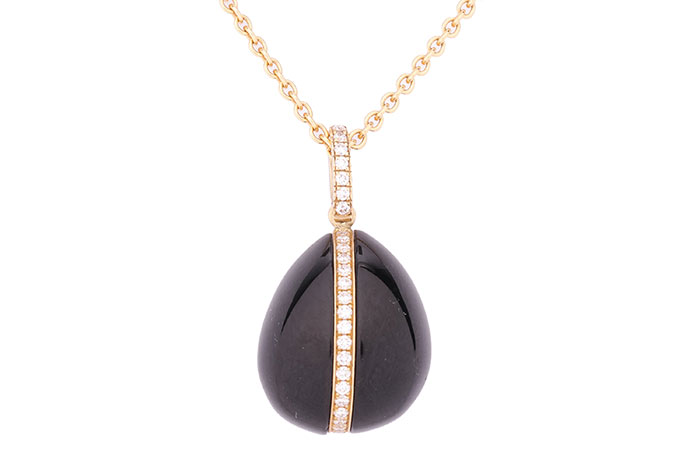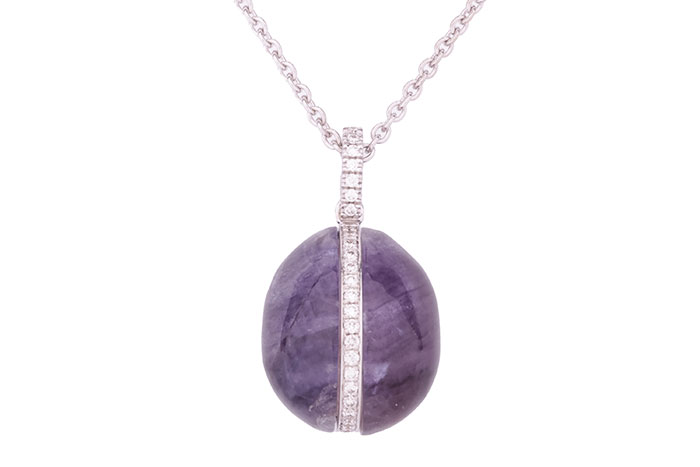How to Identify Fabergé Jewellery
Famous for their magnificent jewelled and enamelled Easter egg creations
26/07/2024
The House of Fabergé was founded in 1842 in Saint Petersburg, Russia, by Gustav Fabergé. Famous for their magnificent jewelled and enamelled Easter egg creations, Fabergé had the ability to masterfully transform everyday objects into stunning works of art. Surviving examples of antique Fabergé jewellery are incredibly rare; The Russian Revolution of 1917 brought an abrupt end to the House of Fabergé, the company was nationalised, and all production ceased. The Bolsheviks confiscated large quantities of Fabergé jewellery to be melted down or sold to western interests to finance the Soviet regime. Private citizens were forbidden from owning jewellery and refugees were forced to sell pieces for the value of the stones. Peter Carl Fabergé fled to Switzerland where he died just two years later, subsequently the Fabergé heirs lost their rights to the Fabergé name. As such, the exquisite jewellery produced by this Russian jeweller is highly sought after by collectors and enthusiasts around the world and commands astronomical prices.
A Fabergé heritage yellow gold diamond & guilloché enamel Cathedral surprise pendant
Any combination of high price and high demand will encourage forgery; indeed, the success of Fabergé attracted international attention resulting in the market being plagued with counterfeits from very early on, therefore it's crucial to know how to identify genuine Fabergé jewellery.
Fabergé jewellery is renowned for its exceptional craftsmanship, the use of high-quality materials and their incredible palate of over 140 different enamel colours. From miniature egg pendants and brooches to cufflinks and tie pins, each jewel is delicately decorated in perfect harmony with the whole design. Genuine Fabergé pieces often feature intricate quality enamelling such as guilloché, champlevé or cloisonné, as well as delicate crisp filigree work. Rubies, emeralds, and sapphires were used, while semi-precious gems such as amethysts, topaz, tourmaline, and agate predominantly feature alongside rose-cut diamonds. The attention to detail, security and precision of settings, and the level of artistry are all key elements of Fabergé's work.
A Fabergé Whitby jet egg pendant
Another way to identify a genuine Fabergé item is by examining the hallmarks and markings. Authentic Fabergé pieces will bear the company's distinctive hallmarks, which may include the Fabergé name or symbol, the Cyrillic initials of the workmaster, a Kokoshnik date mark, the zolotnik such as 56 or 72 which refers to the metal purity corresponding to about 14 and 18 carats respectively, and the Russian assay marks. There are at least eleven know variations of the Fabergé mark and items stamped “C. Fabergé” are British imports. The main jewellery workshops were managed by August Holmström and A. Thielemann.
Fabergé hallmarks are well known and have been extensively published, as such these stamps cannot solely confirm authenticity. The pillage of the Fabergé workshops brings the soundness of even apparently genuine hallmarking into question. One such example details that during the 1930s, the Soviet government gave famous industrialist and art dealer, Armand Hammer, Fabergé hallmarking tools. He is largely considered a major distributor of counterfeit Fabergé items. Therefore, all hallmarks should be carefully considered and checked, workmasters and dates, as well as places are expected to accurately correspond.
A Fabergé blue john egg pendant
Provenance, or the documented history of ownership, can be crucial when identifying a genuine Fabergé piece. Authentic Fabergé items are over 100 years old, and in many cases will have at some point in their history passed through Wartski (London), A La Vieille Russie (New York), or a reputable auction house.
By attending as many Fabergé exhibitions, auction previews and museums, as one can, a discernible "familial resemblance" will become apparent. Always bear in mind that Fabergé jewellery has never been a bargain on any level, if the asking price seems too good to be true, then it probably is.
There is extensive published literature on the House of Fabergé, with some reference books containing copies of original jewellery drawings and designs. The mystery surrounding the fate of so many Fabergé jewels only enhances the allure of these exquisite works of art. The most definitive way to identify a genuine Fabergé piece is to consult with a reputable expert or organisation who specialise in this iconic name – our highly skilled Jewellery Team here at Dawsons would be delighted to help you.
read more
How Do I know if my Jewellery is Valuable?
How Do I Sell Unwanted Jewellery?
Are Jewellery Valuations Free?

Nicky Houston
Our Head of Jewellery, Watches & Silver... Nicky is a highly respected Auctioneer & Valuer, who had dreams of becoming an artist. Whilst she may not have made it as a successful artist herself, Nicky has helped many a customer to successfully sell and buy beautiful pieces of jewellery and works of art over her many years working within the auction industry.
Jewellery Silver & Objects of Virtue Watches
Are you considering selling any Fabergé jewellery?
With a global audience of over 10 million active bidders, Dawsons can secure the highest prices for you.
Get in touch with an expert Valuer for confidential sales advice, we would be delighted to help:


